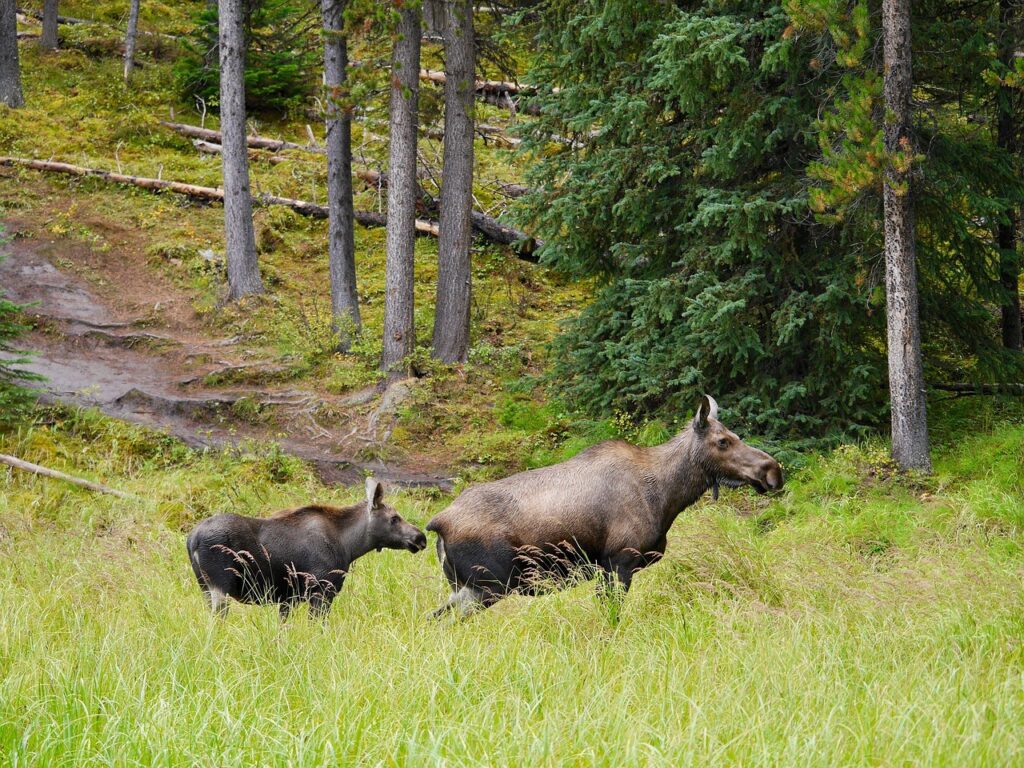Moose



Characteristics:
The moose is the largest member of the deer family. It measures 240–310 cm in length and stands 170–210 cm high at the shoulder. The coat is dark brown to almost black, with long legs and a distinctive hump over the shoulders. The male (bull) carries large, broad antlers that can span up to 2 meters and are shed every winter. The female (cow) is smaller and lacks antlers.
Distribution:
Moose are found throughout most of Sweden, except on some islands in the south. They prefer mixed forests with swamps, clear-cuts, and young woodland, where food and cover are plentiful.
Diet:
Moose feed on leaves, twigs, shoots, aquatic plants, and various trees such as birch, willow, and aspen. In summer, they often wade into lakes and eat water plants.
Young:
The cow gives birth to one or two calves in May–June. The calves are reddish-brown when born and stay with their mother for about a year.
Rut:
The rutting season (mating period) occurs in September–October.
Calls:
During the rut, the bull gives deep grunts or moaning calls to attract cows and challenge rival bulls. Cows may respond with nasal calls.
Tracks:
Moose tracks are very large and elongated, about 12–15 cm long. The two pointed hoof prints are usually close together, and in soft ground, the dewclaws are often visible behind them.
Hunting:
Moose are hunted mainly in autumn through stalking, stand, or driven hunts. They are most active during dawn and dusk and are cautious but curious animals.
Weapon Class:
Hunting moose requires a Class 1 rifle, meaning ammunition with at least 2,700 joules of energy at 100 meters.
